Are you a tea lover who visits tea destinations and explores tea culture, especially in Asia? In this blog, I’ll be sharing my tea journey covering 10 Asian countries famous for their tea. From the robust Indian masala chai to the soothing Thai Cha Yen, and the refreshing Vietnamese Trà Đá, Asian teas captivate tea enthusiasts around the world.
The tea has exciting stories to tell rooted deeply in cultures from around the world. Not only as part of one’s tradition or ritual, but it has many health benefits, making it more enjoyable to drink!
However, when it comes to history and types of tea, I am pretty sure you will find tons online. That’s why I will skip that for now, so without further ado, let’s start with my home town Manila, Philippines.
Tea culture in the Philippines?
Tsaa in Tagalog
Growing up in the Philippines that has a hot and humid climate, I usually drink Nestea’s instant iced tea. It is a sweetened powdered based tea with artificial flavor, which my mom used to buy since we were kids. While local herbal teas such as Ginger infused tea (Salabat) or Lemongrass tea (Tanglad) are used as a home remedy and not for daily consumption. But “real” loose leaf tea wasn’t a thing for a long time.
However, in early 2000, milk tea arrived in the Philippines shore. Its popularity exploded, where most Millennials became addicted to it! Since they have the option to customize their milk tea and add toppings on it. Eventually, milk tea shops began competing with coffee shops. Even fast-food chains like Mcdonald’s and Jollibee join the bandwagon.
Traditionally, the Philippines is not a tea-drinking nation like the neighboring countries. Most locals still preferred coffee or cocoa over tea as part of their daily routine, especially the older generations. Though some locals drink tea due to its popularity, for slimming purposes, health reasons, or as a home remedy.
That’s why I became more curious about the drinking culture in other Asian countries. To my surprise, most of them are tea-drinker highly influenced by French, British, and Chinese by tracing its origin. And that’s when my tea journey begins.
POPULAR ASIAN TEA AND ITS TEA CULTURE
1. Malaysian Teh Tarik: The Pulled Tea & Kopitiam Culture
Teh in Malay
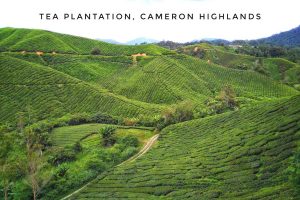
A quick fact: Cameron Highlands is the largest tea growing region in Malaysia, producing mainly black tea. and BOH tea plantation is the largest highland tea producer.
In 2017, I embarked on my first solo adventure and flew to Malaysia. It was an exciting trip full of new experiences. Along the way, I had the pleasure of meeting two fellow Malaysian travelers named Liz and Nurul. We hit it off right away and decided to take a road trip together from Kuala Lumpur to Cameron Highlands.
Our overnight stay was unique as we decided to sleep in the car and take in the spirit of adventure. The next day, we embarked on an exciting hike through the mossy forest of Gunung Brinchang.
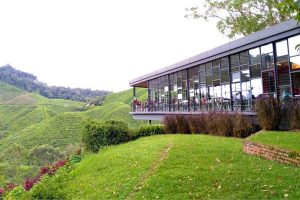
After the exciting hike, we had another delightful experience. We visited the BOH rolling tea plantation where the sight of the lush greenery captivated us. We sat back and relaxed, enjoying the breathtaking view while sipping a cup of tea. As a special treat, we also treated ourselves to a piece of delicious green tea tiramisu at BOH Sungai Palas Café. It was a perfect blend of tranquility, natural beauty and culinary delights.
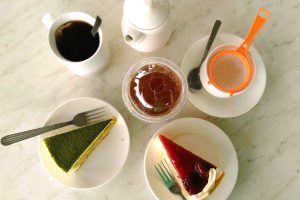
Trivia: Teh Tarik, which means “pulled tea” in Malay, refers to the method of pouring tea from one cup to another, creating a frothy and flavorful drink. Teh Tarik is a national drink of Malaysia. This elaborate technique is often demonstrated in local kopitiams, traditional Malaysian cafes that also serve tea.
Tips: To make Teh Tarik, brew black tea with hot water, then pour it back and forth between two cups to create a frothy consistency. Serve it hot and sweetened with condensed milk.
BOH Tea Estate 39200 Ringlet, Cameron Highlands
Tel: +6 05 493 1324
Hours: Tuesday to Sunday: 9:00 am to 4:30 pm Closed on Monday
Admission is FREE
2. Thai Cha Yen: The Creamy Thai Tea and Thai Iced Tea Stands
ชา or Chā in Thai
During my adventure in Hua Hin, I had the pleasure of exploring Khao Sam Roi Yod National Park with my friend Liv. We decided to camp overnight and go for a hike in the vast expanse of the park. It was a huge area that couldn’t be fully explored in a single day. Among the many impressive sights we discovered, Phraya Nakhon Cave stood out as truly majestic.
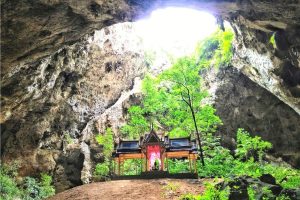
As we returned to the parking lot after our hike, I came across a charming little stand serving Thai milk tea. My curiosity got the better of me and I decided to try the tea. It was my first sip of real Thai milk tea, and it was absolutely refreshing and delicious.
Thai milk tea is a staple of Thai street culture. It’s best drunk in hot weather. In Thai, the tea is called cha yen with milk, cha dum yen without milk.
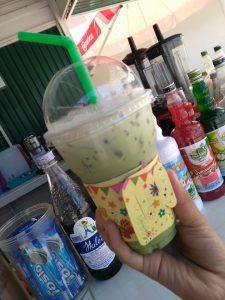
Fun Fact: Traditional Thai tea is made with strongly-brewed Ceylon black tea, sweetened with sugar and condensed milk. They often include crushed tamarind, vanilla, cinnamon, orange blossom water, star anise, and red or yellow food coloring (which is C Yellow Number 6). Now you can buy a Thai tea mix, just add sugar and condensed milk in it!
Tips: Brew Ceylon tea, strain it, and add condensed milk and sugar while it’s hot. Let it cool and serve over ice for a creamy and indulgent Thai Cha Yen.
3. Taiwanese Bubble Tea: A Fusion of Tea and Gongfu Cha
波霸奶茶; bōbà nǎichá
Taiwan is known for its exceptional tea production, especially its prized oolong tea. However, it gained even more fame with the introduction of pearl milk tea, a beverage that took Southeast Asia by storm. When I had the opportunity to visit Taiwan, one of the highlights on my bucket list was to visit the birthplace of pearl milk tea itself – the famous Chun Shui Tang Tea House in Taichung.
Of course, I couldn’t pass up the opportunity to try the classic pearl milk tea. It was a truly delicious experience. The taste was soothing, the consistency creamy, and the sweetness level perfectly balanced. The tapioca pearls were just the right size and added a delicious touch to the drink. The tea house prided itself on using only the highest quality tea leaves, milk and tapioca pearls in its creations.
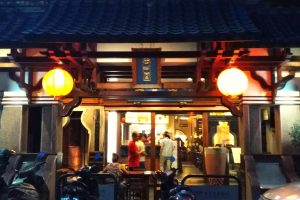
For all the milk tea lovers out there, Chun Shui Tang Teahouse is a must-visit when in Taiwan. However, there was one thing I missed during my visit – the milk tea workshop! Here, you’ll learn how to make your own bubble tea under the guidance of a professional instructor. As an added bonus, participants receive a free milk tea shaker and certificate. This is an incredibly cool concept, and I can’t wait to try it out on my next visit to Taiwan!
Trivia: Did you know that at Chun Shui Tang, only those who have passed the “Certified Tea Master” exam are allowed to enter the bar and make drinks?
Fun Facts: Bubble tea, also known as boba tea, originated in Taiwan and is known for its unique addition of tapioca pearls or fruit jelly for a delicious texture.
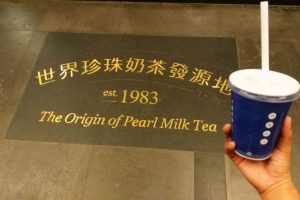
Another fun fact: Taiwanese tea culture places great emphasis on the art of tea brewing and the appreciation of high quality teas. Gongfu cha, a traditional tea ceremony, uses small clay teapots that are brewed several times and employs precise techniques to extract the best flavors from the tea leaves. This ceremonial use of tea shows the beauty and reverence of the Taiwanese for this ancient beverage.
Tips: Choose your favorite tea base (e.g., black tea, matcha, green tea, white tea, oolong tea, or various fruit teas), add milk or fruit flavors, and garnish with tapioca pearls, popped boba, red bean, agar jelly, custard, or fruit jelly. Enjoy the combination of tea and chewy deliciousness with every sip.
Chun Shui Tang (Original Store)
Address: No. 30, Siwei Street, West District, Taichung City, Taiwan
Tel: +886 4 2229 7991
Hours: 8:00 am – 10:00 pm
4. Lao Silkworm Poo Tea (Saa Kii Morn)
ຊາ or saa in Lao
During my time in Luang Prabang, I came across a rather unusual drink, silkworm tea, also known as Saa Kii Morn. This unique brew is made from silkworm droppings, which are said to have medicinal properties, and is a specialty drink available at Silk Road Cafe.
The cafe is part of Ock Pop Tok, a Living Craft Center that uses silkworms to make Lao textiles. It may sound strange, but out of curiosity, I decided to try it. Surprisingly, the taste is quite mild and bland, reminiscent of a smooth green tea with no aftertaste.
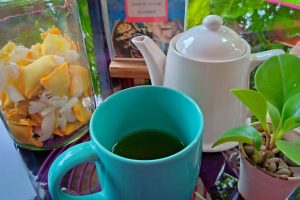
Trivia: Did you know that one of the oldest tea trees in the world is in Phongsaly, Laos? It’s called the ‘400-year-old’ Komaen tea tree that must be climbed to pluck the leaves, made into tea cigars when the leaves have not been sold to local tea manufacturers.
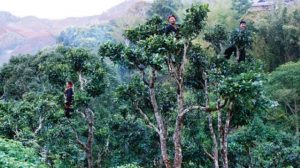
Ock Pop Tok (Silk Road café)
Address: 125/10 Ban Saylom, Luang Prabang, LA 0600
Phone: +856 71 212 597
Hours: 7:00 am- 8:00 pm
*They also run workshops and seminars if you are interested in weaving or traditional crafts.
5. Burmese Lahpet Yay: The Fermented Tea Leaves
လက်ဖက်ရည် or lahpet-yay in Burmese
In Myanmar, tea houses are an institution. Traditionally, they’re outdoors, with low stools and short, square tables where men in longyis often gather. You can easily spot teahouses in alleyways or markets. It’s a place where locals talk politics and business, watch sports on TV, or just chat for hours while smoking and drinking Burmese tea.
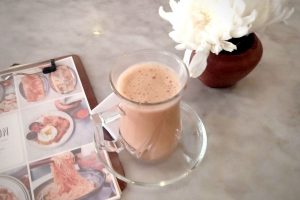
The traditional tea houses still exist, but the new hipster tea houses are getting more and more attention from locals and tourists. One of them is the Yangon Tea House, a recommendation of Lonely Planet Myanmar.
It serves traditional Burmese food and traditional tea (lahpet yay) in style. Whether you like your tea with less black tea, more condensed milk and less evaporated milk or vice versa. You can adjust the taste in 16 different ways. Cool, right?!
I remember ordering hot chok yat with a dark chocolate bar. The taste was full-bodied, sweet and creamy. I enjoyed drinking it! Prices for the tea range from 1,500 to 4,000 kyat.
Another interesting Burmese dish is the pickled tea leaves or lahpet. You can eat them as a salad called Lahpet Thoke or with rice called Lahpet Tamen. Yes! The Burmese not only drink tea, but they also eat and ferment it!
We tried Lahpet Tamen or pickled tea rice at Junction Center. It has an earthy and spicy flavor and crunch from the nuts and peas. I recommend you try it when you visit Myanmar!
What’s in Lahpet Tamen?
The pickled tea salad consists of pickled tea leaves, fried peas, sliced tomatoes, cabbage, roasted peanuts, dried shrimp, fried maggots or beetle larvae, sesame seeds, pickled ginger and garlic. The dressing consists of oil, usually peanut oil, combined with a little fish sauce and lime juice.
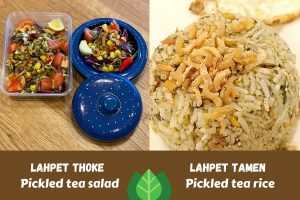
Trivia: Did you know that in ancient times fermented tea leaves were used as a peace symbol or peace offering between kingdoms at war? Nowadays, a lahpet served as a traditional expression of hospitality to house guests.
Fun Fact: Lahpet is a traditional Burmese delicacy made from fermented tea leaves mixed with various ingredients such as nuts, garlic, sesame seeds and dried shrimp. It’s often eaten as a salad or condiment.
Tips: Lahpet is often served in Burmese restaurants, but you can also prepare it yourself by buying fermented tea leaves in Asian specialty stores and following a traditional recipe.
Rangoon Tea House
Address: 77 Pansodan Road, (Lower Block), First Floor, Kyauktada Township, Yangon, Myanmar
Tel: 01 1224534
Hours: 8:00 am – 10:00 pm
6. Indian Masala Chai: A Spiced Delight and Chai Wallahs
चाय or Chai in Hindi
Drinking chai is part of Indian heritage and the backbone of Indian street food culture. Street stores sell chai in earthen cups, especially in the afternoon, and pair it with savory treats such as pakoras, farsan, or samosa.
As the train chugs along, chai vendors, also known as chai wallahs, make their way through the carriages, serving boiling hot chai in convenient disposable cups. It’s a common sight and a delicious treat while traveling. It’s also customary in Indian households to offer chai to visiting guests. In our host families, chai is served several times a day, almost like a staple food. However, in most Indian households, a break is taken around 4 p.m. to enjoy a refreshing cup of tea.
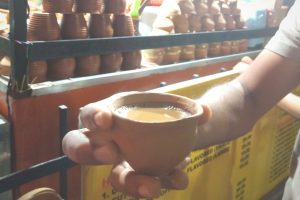
What are the ingredients of Masala Chai?
The main ingredients are black tea, spices, milk and sugar or jaggery. Spices can be ginger root, cardamom, cinnamon, cloves, black pepper, saffron and many other spices, depending on the region. These spices have medicinal properties according to Ayurveda.
Note: You can also use these spices in many ways for your health, especially when traveling!
Tips: To make masala chai, add black tea leaves, spices, milk and sweetener to a pot. Let the mixture simmer until it’s well blended and enjoy a warm, aromatic cup of Indian masala chai.
Interesting tea custom: the presence of chai wallahs or tea vendors. These tea vendors skillfully prepare and serve the tea in charming clay cups, offering an invigorating boost to those who cross their path.
6.1 Longwa, Nagaland
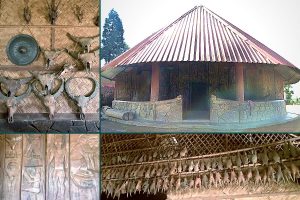
Our time in Longwa was truly unforgettable, but the most incredible experience was having chai with Chief Angh, the leader of the Konyak tribe, whose house is right on the border between Indiaand Myanmar. How cool is that?
On our last night in Longwa, our host took us to visit Chief Angh. I was so excited to sit with them, drink chai and chat, even though we didn’t speak the same language. Luckily, our host helped us with the translation.
I want to give you a little insight into this place. The locals here have a strong cohesion because they don’t have things like TVs to distract them. After dinner, they gather around the cozy wood fireplace in their kitchens. Chai and conversation are their favorite pastimes. Life may be simple for them, but it has deep meaning.
6.2 Sivsagar and Guwahati, Assam
While we were in Sivsagar, we met Naba, our Assamese friend. He took us to some historical places in the city, ate at an Assamese restaurant, and visited the tea garden so we could see how tea is made.
However, we weren’t allowed to enter the tea factory because it’s a private company that doesn’t allow tourists. But in the tea garden itself, there were no restrictions. So I just took some photos.
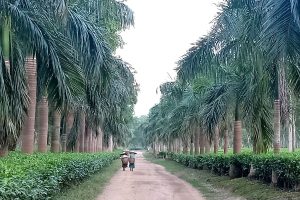
While in Guwahati, I had the exciting opportunity to create my very first chai with the help of my friend and kind host. We decided to make a special blend called Royal Indian Coconut Chai. To give it a unique touch, we replaced the regular milk with creamy coconut milk. Besides black tea, we added a delicious combination of saffron, cardamom, turmeric, cinnamon, black pepper and a touch of honey after cooking.
The resulting flavor was truly captivating, with a complexity that surpassed making a regular tea. A wonderful bonus is that this delicious brew is completely vegan friendly. It was an unforgettable experience that introduced me to the art of making a distinctive and enjoyable chai blend.
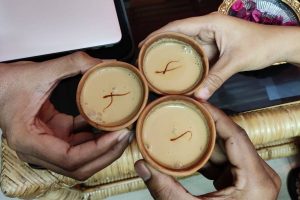
6.3 Gangtok, Sikkim
A brief fact: Sikkim is the first ecological state in the world and is located in the northeast of India. It borders Tibet (China), Nepal, Bhutan and West Bengal (India). There is the mountain Kangchenjunga, the third highest mountain in the world.
At MG Market you’ll find a paradise for tea lovers with its charming tea bars offering a selection of high quality and exotic teas. From classic black and white teas to captivating oolong varieties, seasonal teas, delicious chai blends and soothing herbal teas, there is something for everyone. The selection of flavored tea blends enriched with fruits, flowers, plants and spices goes even further, creating a symphony of flavors.
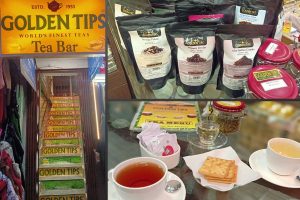
The tantalizing aromas in the air at these tea bars simply draw you in. Luckily, Golden Tips and Chai Chun give you the opportunity to sample the teas before you make your choice. It’s an irresistible invitation for tea lovers, a chance to immerse yourself in the world of tea and discover new favorite drinks. Whether you’re a seasoned tea connoisseur or just starting your tea journey, these tea bars are a must-visit and promise an enchanting and delicious experience.
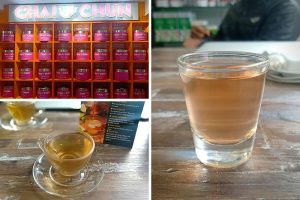
Trivia: Did you know that there is one organic tea estate in India called Temi Tea Garden run by the Sikkim government since 1969. It provides employment for Tibetan Refugees as initiated by the last King of Sikkim.
The Golden Tips Tea showroom
Punam Building, First Floor, MG Marg
Hours: 9:00 am – 8:00 pm
Chai Chun Tea
1st Floor, MG Marg, Opp. Axis Bank, 737101, Gangtok, Sikkim,
Phone: 9593374444
*They also offer a 3-day ChaiVeda Tea course and Evergreen factory visit
6.4 Darjeeling
Darjeeling tea is known as “the champagne of teas” It’s considered the most famous black tea in the world for its “muscatel” or spicy flavor with a slightly bitter finish, especially the second flush tea. It’s grown and produced in 87 tea gardens in Darjeeling. In some of them there are tea resorts where you can stay overnight and visit the tea farm.
We took a day tour of the quaint town of Darjeeling, which was affordable at 250 rupees per person. One of our stops was a tea growing area located in the valley. I must admit, however, that I was a bit disappointed with the view, as the surrounding area was marred by scattered trash. I did know that there were other tea plantations in the area known for their beauty, but unfortunately we were unable to visit them due to time constraints.
As we explored the lively streets of Darjeeling, we discovered some culinary delights. The local chai, which costs only 15 rupees, was the perfect companion for the chilly weather. We indulged in the delicious momos, which cost only 50 rupees, and enjoyed the delicious combination of flavors. To add to the fun, visitors could don tribal costumes and take memorable photos. There were also plenty of opportunities to buy packaged loose tea on the main street, so tea lovers could take home a taste of Darjeeling’s best tea.
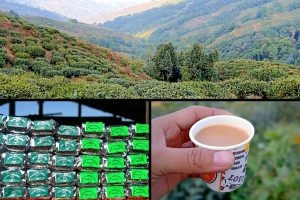
Trivia: Did you know that there are tea festivals in India celebrated every year between November to February, which takes place in Assam, Darjeeling, Tamil Nadu, and Sikkim.
7. Bhutan’s Suja: The Himalayan Delicacy and Cultural Significance
Suja in Bhutanese
Suja or butter tea is a staple food in Bhutan and other Himalayan countries such as Tibet, Nepal and India (especially Sikkim and Ladakh). Since the body burns more calories at high altitudes, the nutrient-rich butter serves as a great source of energy and prevents chapped lips.
Traditionally, suja is made from tea leaves, a pinch of salt, water and yak butter. Butter tea has great cultural significance in Bhutanese society. It’s often served at religious ceremonies and social gatherings and symbolizes warmth, hospitality and connection.
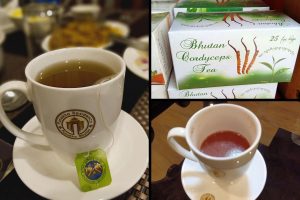
When I tried the butter tea, I was surprised by its strong salty and buttery taste, although it has a soothing effect on my stomach. Cordyceps tea, on the other hand, is too sour for me; I threw up when I tried it.
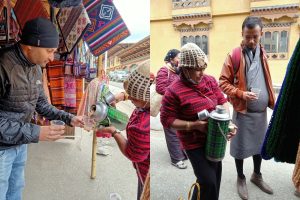
Fun Fact: Cordycep tea is a specialty of Bhutan, made from the unique caterpillar fungus that grows in the Himalayan region. It is highly valued for its medicinal properties.
Tips: To experience the flavor of Cordycep tea, steep the dried fungus in hot water and let it infuse for a few minutes. Savor the earthy and herbal notes of this rare and precious tea.
8. Vietnamese Trà Đá: A Refreshing Iced Tea and Street-side Cafes
Trà in Vietnamese
Tea culture in Vietnam brings people together. That’s why some locals invite friends or neighbors over for a chat over a cup of tea; in cafes and restaurants, staff automatically serve green tea free of charge. Street cafes with small plastic stools and low tables are popular places where locals gather to socialize over a cup of their favorite beverage.
There are three famous types of tea in Vietnam: green tea (Trà xanh), black tea (Trà Mạn) and lotus flower tea (Trà sen). But in Dalat, most locals drink this traditional herbal tea called artichoke tea (Trà atiso), which has a particularly pleasant aroma reminiscent of vanillaand chocolate. You have to try it in Dalat!
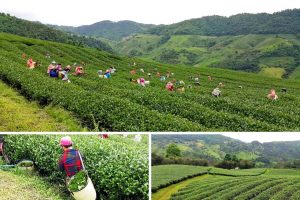
Trivia: Did you know that the first tea factory in South East Asia built by French is in Dalat using the most advanced tea processing technology? It’s called Cau Dat Farm, one of the famous attractions in Dalat, that produces high-quality tea such as Oolong and green tea, vegetables, and coffee.
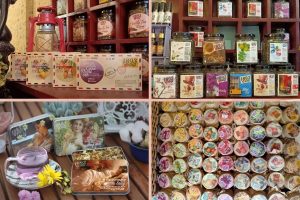
Trà 1893 in Dalat is one of my absolute favorite tea stores. When you enter it, you feel like you’re in a magical realm adorned with enchanting dried flowers. The store offers an impressive selection of dried flowers, tea blends with fruits, locally made herbal products and essential oils. To make the experience even more enjoyable, they even offer a foot bath to make you feel truly pampered during your visit.
Dalat is also known for its lively cafe scene, where locals gather to relax and socialize over a cup of tea or coffee. Best of all, the prices at these cafes are affordable, so anyone can enjoy a warm drink while taking advantage of the free wifi. It’s the perfect blend of relaxation, socializing and enjoyment in Dalat’s thriving tea culture.
Fun Facts: Trà Đá is a popular Vietnamese iced tea made from strongly brewed black tea, often served with ice cubes and a slice of lemon or lime.
Tips: Brew strong black tea, add sugar while it’s still hot, and let it cool. Serve it on ice with a slice of lemon or lime for a refreshing and tangy trà Đá.
Cau Dat Farm
Address: Truong Tho Hamlet, Tram Hanh Ward, Da Lat City
Hotline: 18001192
9. Sri Lanka’s Golden Tip Tea: A Taste of Elegance
Té or තේ in Sinhalese
Tea from Sri Lanka is known for its amazing taste and unique customs. It’s a delicious drink that combines a variety of flavors and traditions. When you drink Sri Lankan tea, it’s a treat. The process of making it and the way it’s served are steeped in history and elegance.
During our December 2021 trip to Sri Lanka, my husband and I had the pleasure of exploring the country’s scenic beauty and immersing ourselves in its rich tea culture. One of the most memorable experiences was visiting the tea plantations near Kandy and Nuwara Eliya. We were fascinated by the process of tea production and got to taste different kinds of tea.
Among them, Golden Tip tea stood out with its unique characteristics. This tea is so rare that it’s not normally exported. Its mild taste and the fascinating sight of its golden color when poured into a transparent cup made it truly exceptional. It was a delicious moment that added a touch of magic to our Sri Lanka adventure.
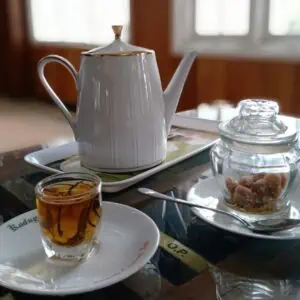
Fun Fact: Golden tip tea is a type of tea that is highly valued for its unique characteristics. It is made from the tender buds or tips of the camellia sinensis plant, which are covered in fine golden hairs. These golden tips are carefully harvested and processed to create a tea that is known for its exquisite flavor, delicate aroma, and golden hue. Golden tip tea is often considered a premium tea due to its rarity and the meticulous care involved in its production. It is highly sought after by tea connoisseurs for its smooth, sweet taste and rich, complex notes.
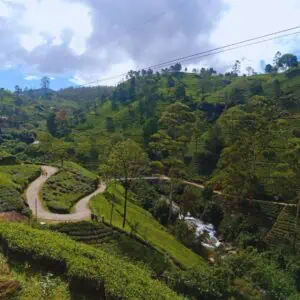
Tips: Steep Golden Tip Tea in hot water for a short time to bring out its delicate flavors. Enjoy the smooth, floral notes and the exquisite experience that this tea offers.
Tea Custom: The custom of high tea, influenced by British colonialism, is still observed in luxury hotels and tea estates. High tea is an afternoon ritual where a selection of teas, along with savory and sweet treats, are served, creating a delightful and refined experience.
10. Captivating Turkish Tea: A Delightful Brew
Çay in Turkish
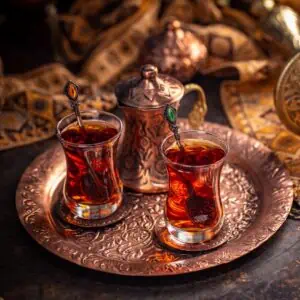
Turkey has a vibrant and deeply rooted tea culture that plays an important role in people’s daily lives. Turks are known for their love of tea and have elevated the enjoyment of this popular beverage to an art form. Tea isn’t just a beverage, but a social ritual that symbolizes hospitality, friendship and warmth.
In homes, workplaces and even busy tea gardens, Turkish tea is brewed in traditional double-decker kettles called “çaydanlık,” giving it a distinctive aroma and flavor. Whether served with a traditional Turkish breakfast or as a soothing break during the day, tea culture in Turkey is a cherished tradition that embodies the country’s warmth, hospitality and sense of community.
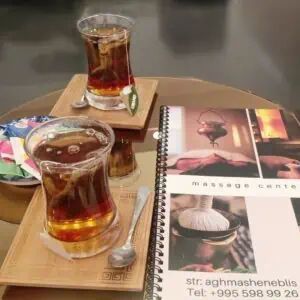
Although I’ve not yet had the opportunity to visit Turkey, during my stay in Georgia I came across a neighborhood where there were several Turkish restaurants. There, I had the pleasure of trying Turkish tea for the first time during my massage appointment before our wedding. I immediately fell in love with it, especially the traditional glasses in which the tea is served, which added an extra charm.
Fun Fact: Turkish tea, known as çay, is a popular beverage in Turkey and is often served in small tulip-shaped glasses. It is brewed using a double teapot called a çaydanlık.
Tips: Brew black tea in the upper pot of the çaydanlık with boiling water. Dilute the strong tea with hot water from the lower pot according to your desired strength. Serve it in small glasses and enjoy the Turkish tea-drinking experience.
The Health Benefits of Asian Tea
Asian tea is not only delicious, but it is also packed with health benefits. Some of the most notable health benefits of Asian tea include:
Reduced Risk of Heart Disease
Studies have shown that drinking green tea can help to reduce the risk of heart disease by lowering cholesterol levels and improving blood flow.
Improved Brain Function
Asian tea contains caffeine and other compounds that can help to improve brain function and boost alertness and concentration.
Reduced Risk of Cancer
Some studies have suggested that drinking green tea may help to reduce the risk of certain types of cancer, including breast, prostate, and colorectal cancer.
FAQs (Frequently Asked Questions)
Q1: Are these Asian teas easily accessible outside their respective countries?
A: Many Asian teas have gained international popularity, and you can often find them in specialty tea shops or online stores that offer a wide range of teas from around the world.
Q2: Can I adjust the sweetness and milk content of these teas?
A: Absolutely! The sweetness and milk content can be adjusted according to personal preference, allowing you to tailor the tea to your taste.
Q3: How can I brew these teas at home?
A: Each tea has its own brewing method. Follow the instructions provided or experiment with steeping times and water temperatures to find the perfect balance of flavors.
Q4: Can I add my own twist to these traditional teas?
A: Absolutely! Tea brewing is an art, and adding your own creative touch can lead to delightful discoveries. Feel free to experiment with ingredients, flavors, and presentation to make the tea uniquely yours.
Q5: Are these teas suitable for vegetarians or vegans?
A: Most Asian teas are plant-based and suitable for vegetarians and vegans. However, it’s always recommended to check the ingredients and production methods to ensure compliance with dietary preferences.
Q6: How can I incorporate tea into my daily routine?
A: Tea can be enjoyed at any time of the day. Consider incorporating it into your morning routine, as an afternoon pick-me-up, or as a relaxing evening ritual.
Q7: Can I reuse tea leaves for subsequent infusions?
A: Depending on the type of tea, you may be able to steep the leaves multiple times. Experiment with different steeping times and water temperatures to explore the flavors of each infusion.
Q8: Are there any specific tea accessories I should consider?
A: While not necessary, tea accessories such as infusers, teapots, and specialized tea cups can enhance your tea-drinking experience. Choose accessories that suit your preferences and make the ritual more enjoyable.
Q9: Are there any seasonal variations or celebrations associated with these teas?
A: Yes, some teas are traditionally enjoyed during specific seasons or celebrations. For example, Thai Cha Yen is often enjoyed during the hot summer months in Thailand. Exploring these seasonal variations can add an extra layer of cultural richness to your tea experience.
Conclusion
It amazes me how important tea is in many countries and how easy it’s to connect with locals just by drinking tea. When I learned about tea culture in Asian countries, tea took on a whole different meaning. For many locals, tea isn’t just a beverage, but a way of life that has been practiced for many generations. Drinking a cup of tea gives you a feeling of contentment or excitement.
Whether you drink tea plain, with spices, or with toppings as in milk tea, the most important thing is that you enjoy every sip of it. As Thich Nhat Hanh once said, “Peace, happiness, and joy are possible while I drink my tea.”
As we embark on a journey through Asian teas, we can discover a variety of flavors, cultural traditions, and unique preparation methods. From the bold Indian Masala Chai to the delicate Sri Lankan Golden Tip Tea to the rare Cordycep tea from Bhutan, each tea offers a special experience. Whether you prefer the strong and spicy, the creamy and sweet, or the fragrant and herbaceous, Asian teas have something to offer every tea lover.
So, why not embark on your own tea adventure? Take a sip, let the flavors transport you, and savor the richness of Asian tea culture. Cheers!
I hope you learned something from this blog. Don’t hesitate to share your tea experiences with me in the comment section below!
Tea Lovers Ultimate Bucket list!
Since I haven’t been to China, Japan, and other countries famous for their tea, my goal was to visit them at some point, that’s why I created this TEA LOVER’S ULTIMATE BUCKET LIST that can be useful not only for me but for all Tea lovers out there! You can download it for your reference with checkboxes on the side, making it easier to tick!
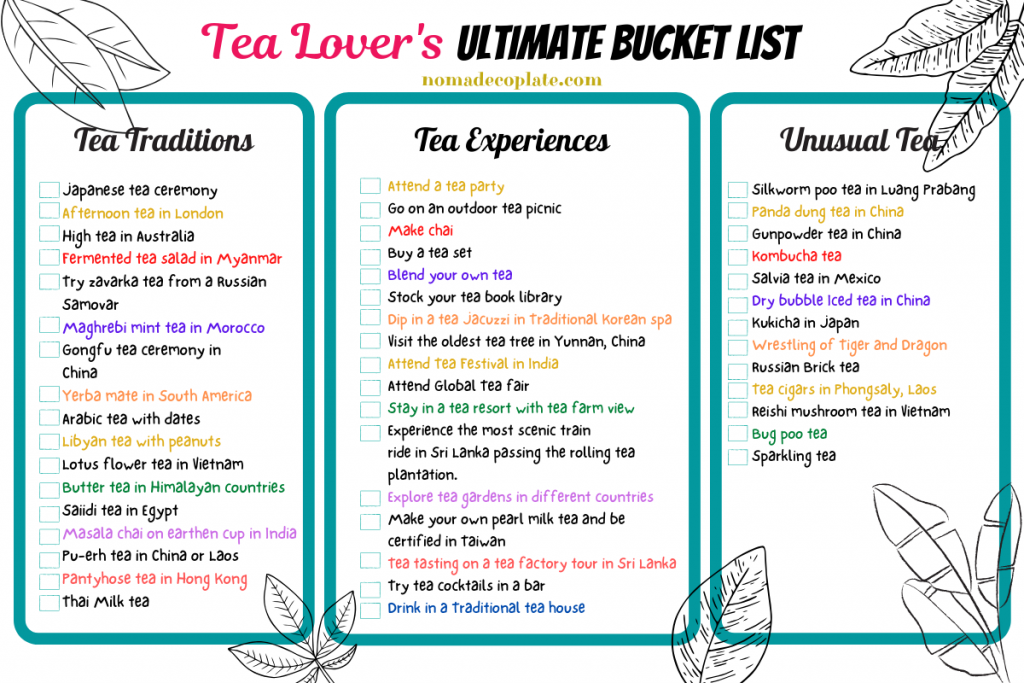
What do you think about this list? Let me know your tea ideas in the comments below!
Pin for later!
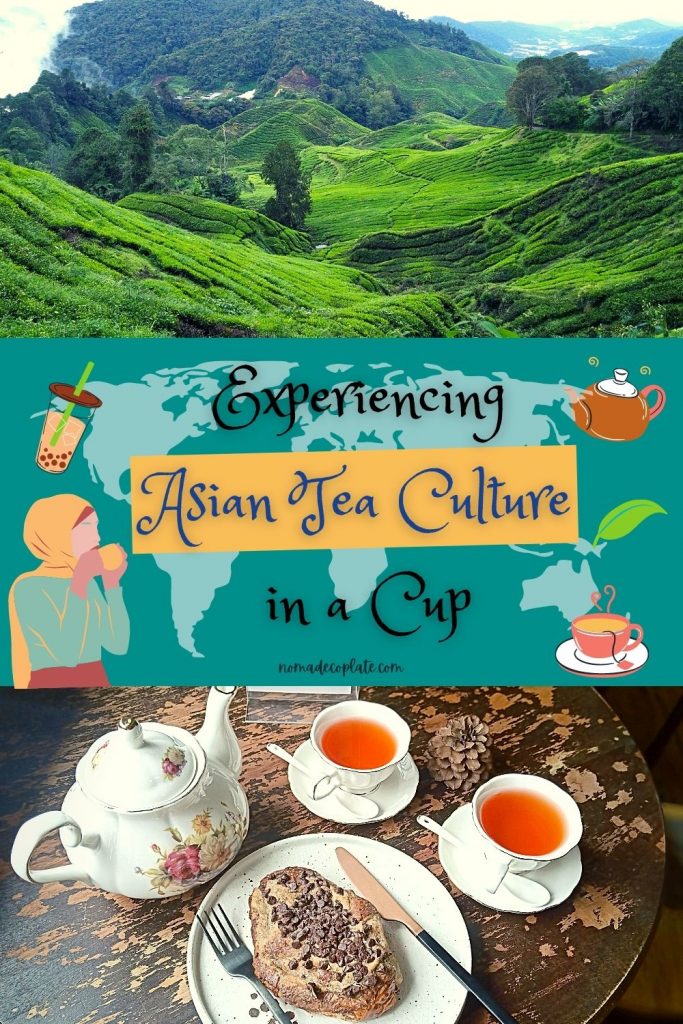
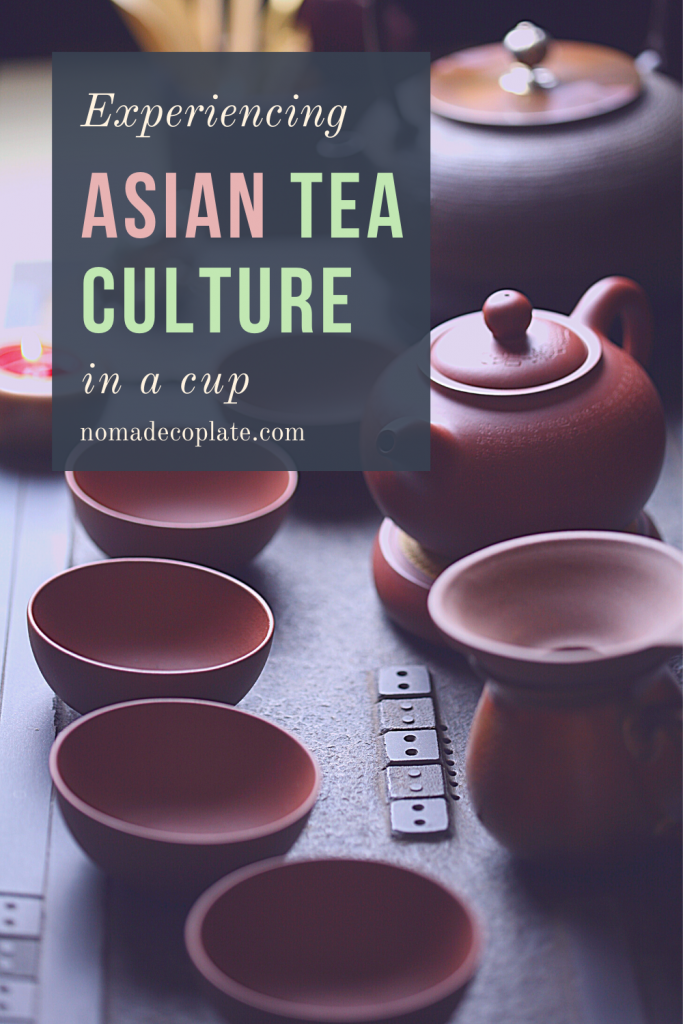
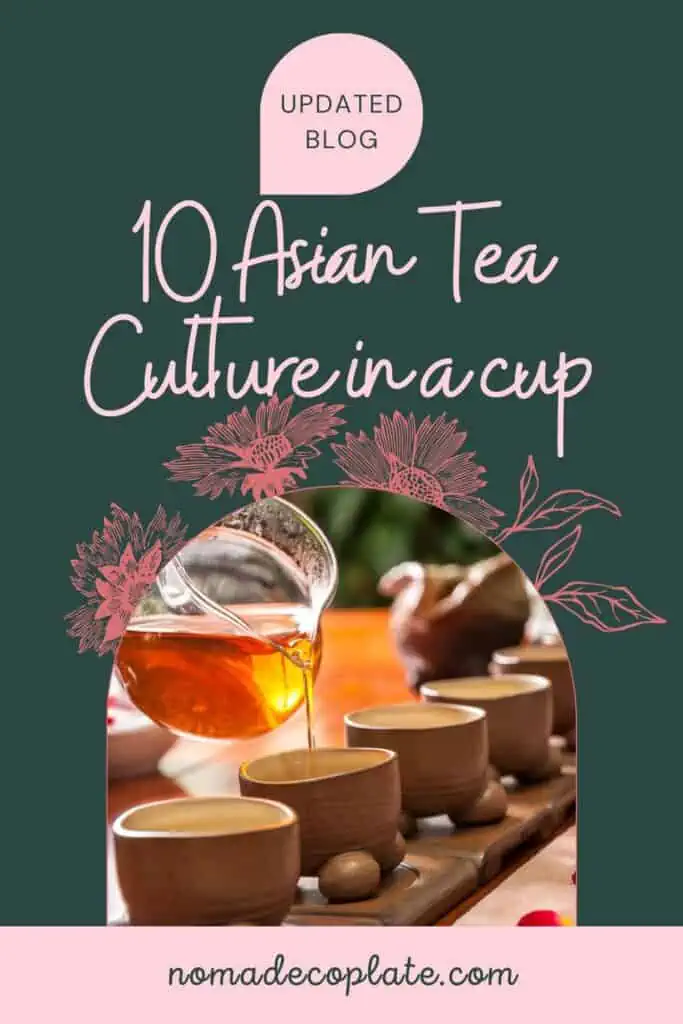
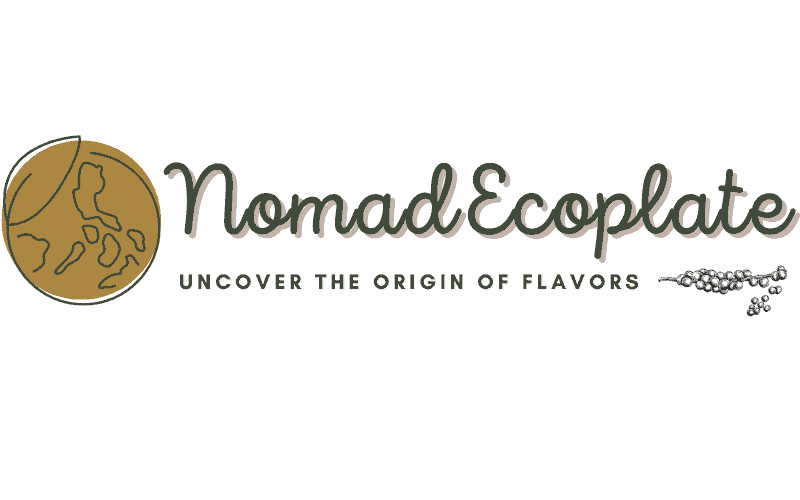
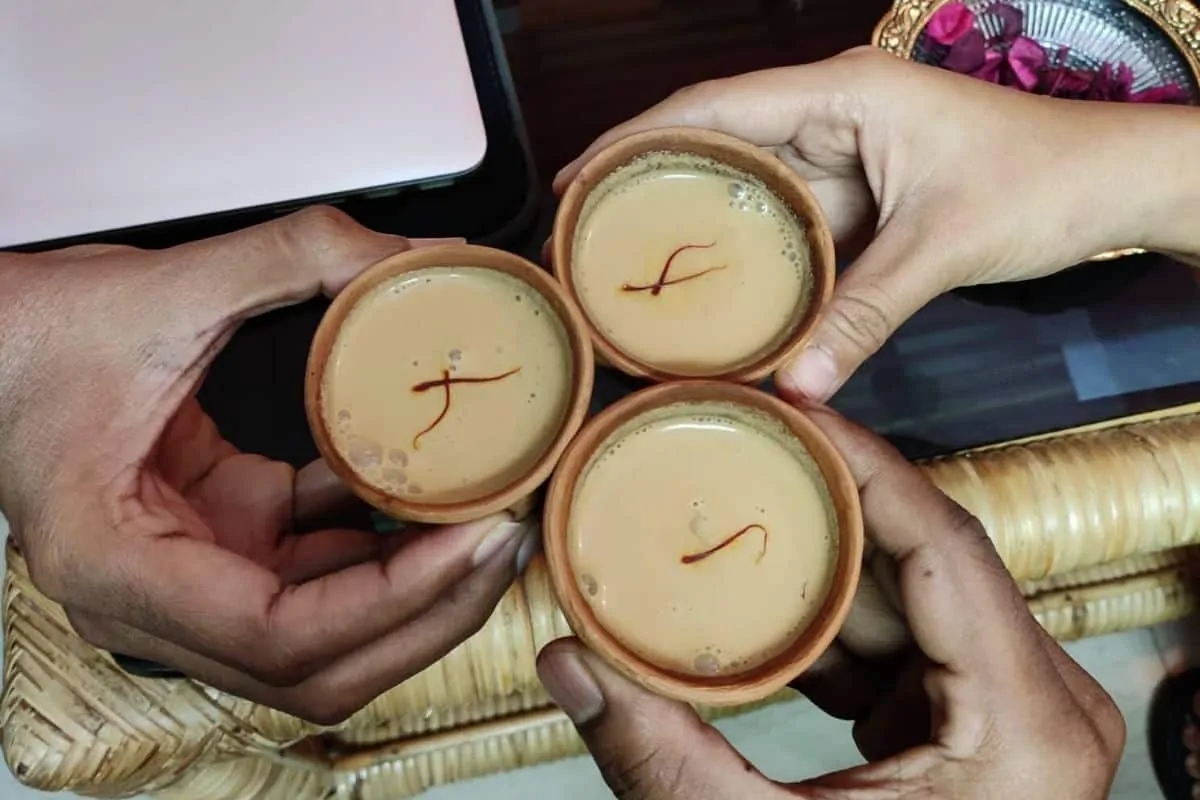
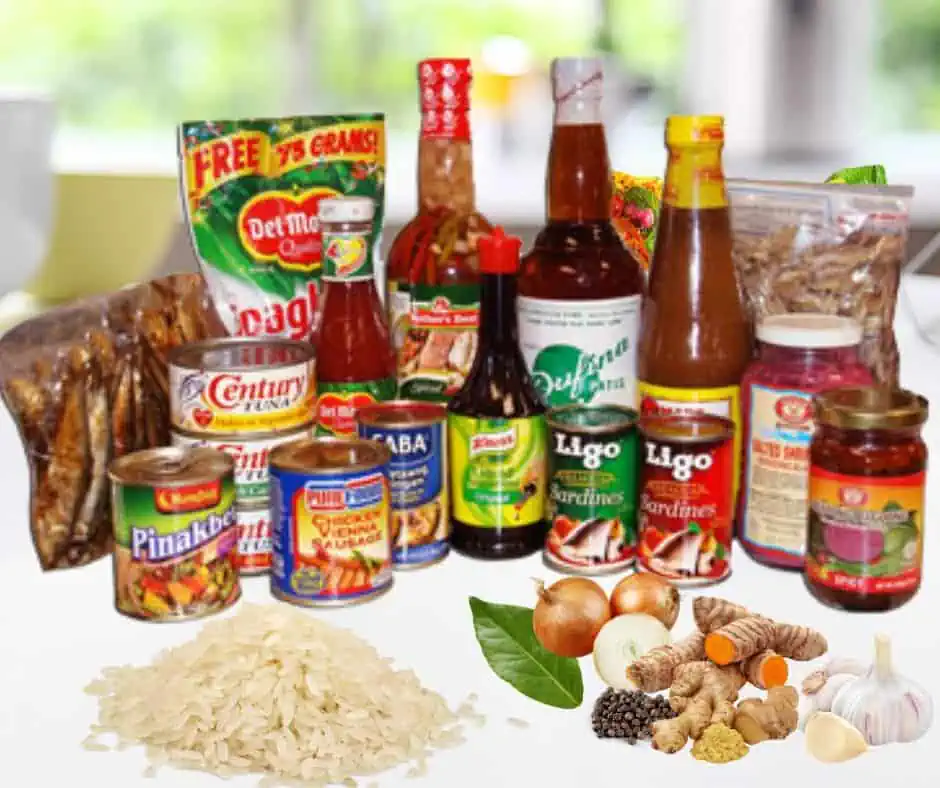
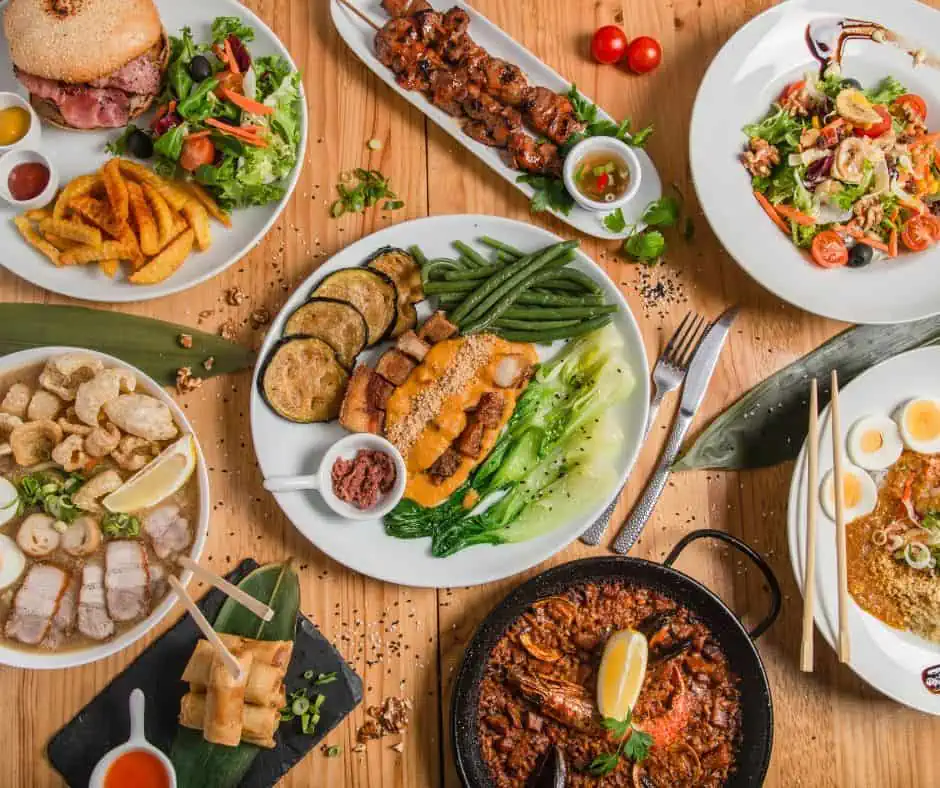
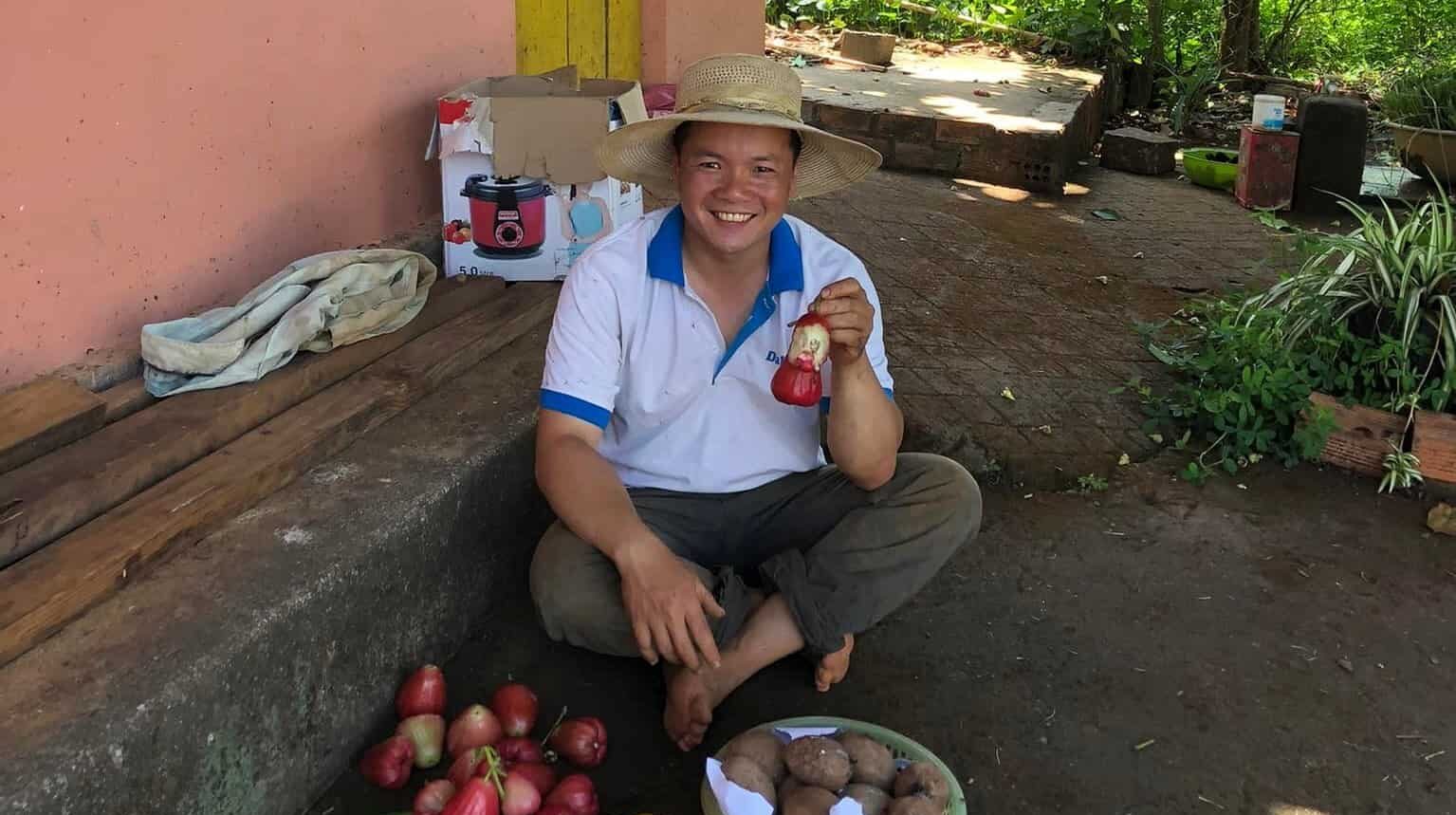
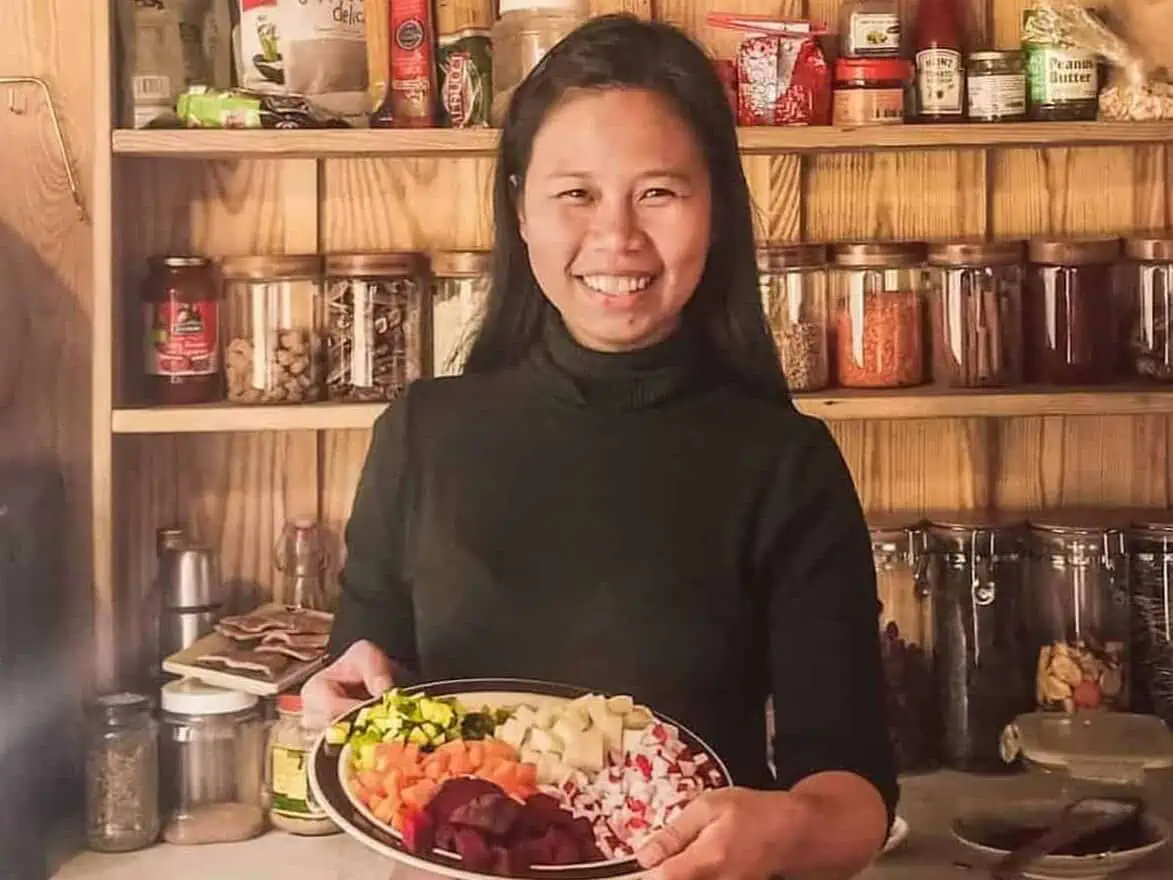

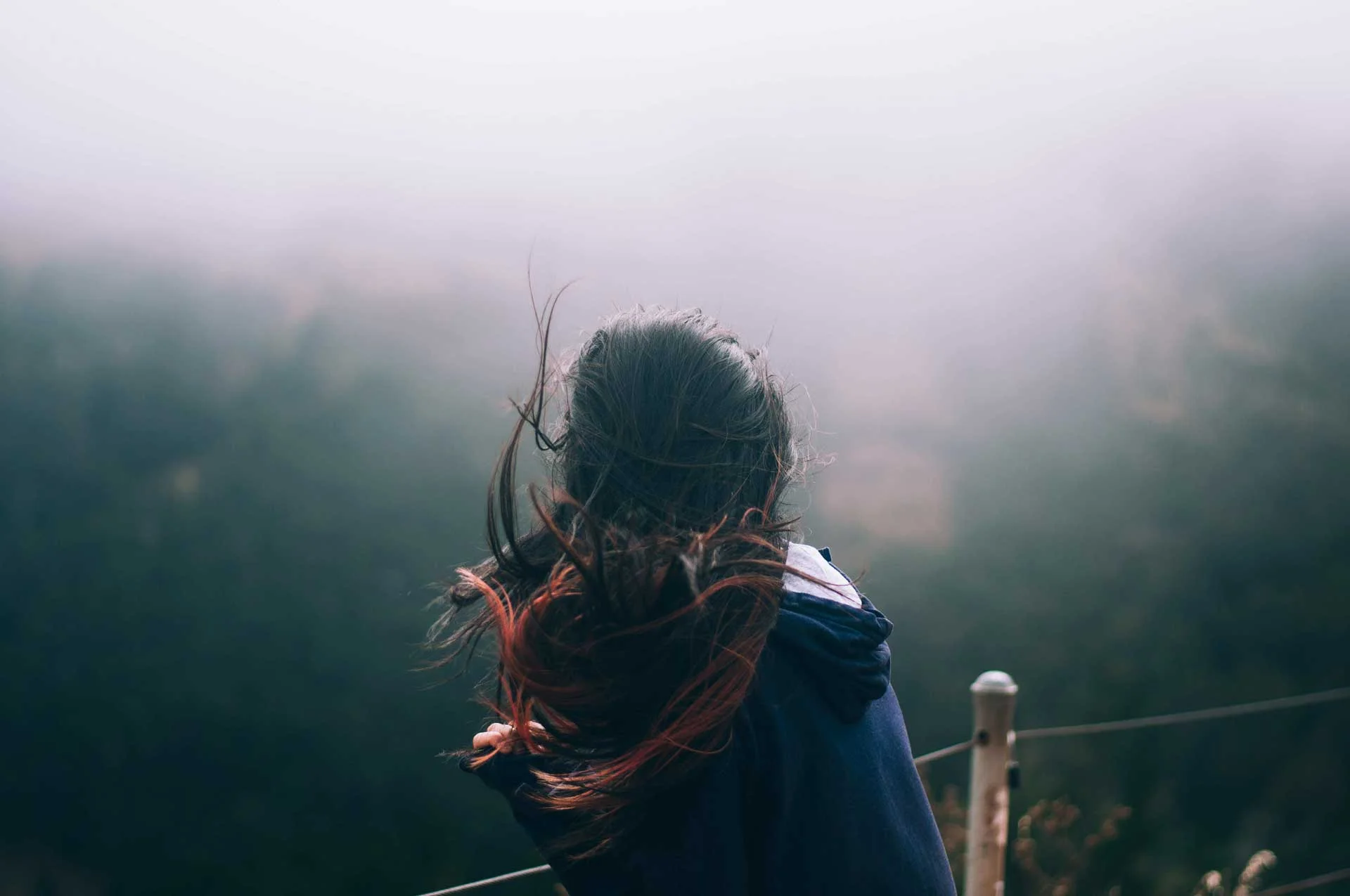


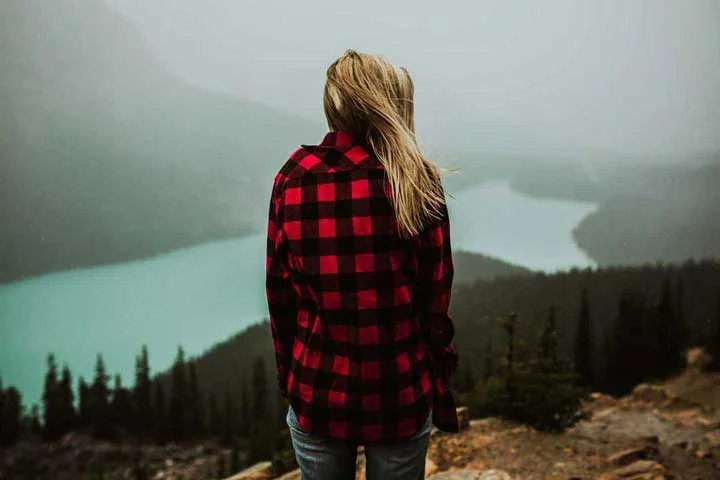
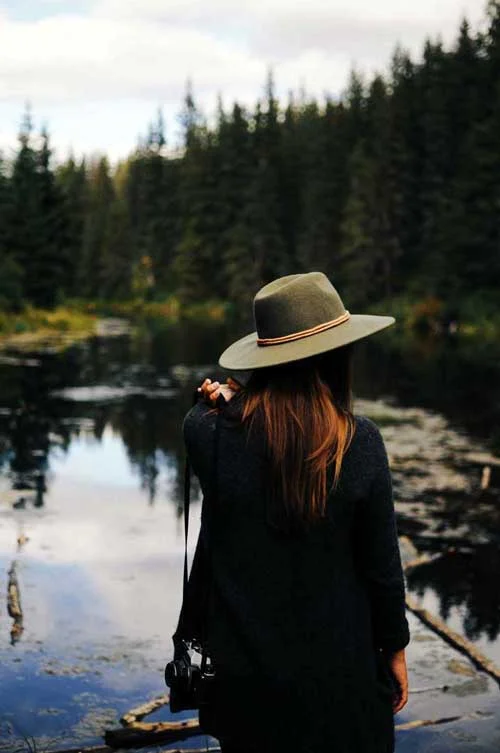
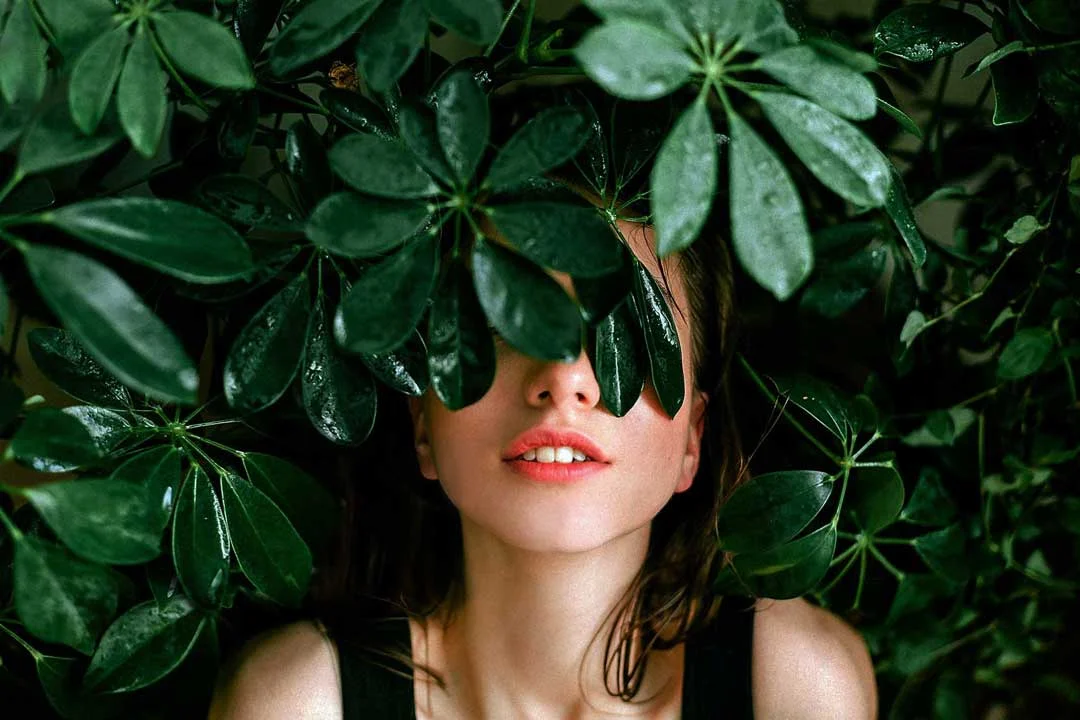

I always drink tea while sipping a cup of coffee. Tea and coffee are indispensible to my life and most Vietnamese. Thank you for sharing interesting informations
I wish I can drink coffee too Ms. Su! I can tell how Vietnamese love both.
I’m not a big tea drinker but when i do, i like green tea or jasmine tea. Admittedly, those are the few ones I know. I’d like to explore more variants soon! You made such a comprehensive blog. Thanks for sharing this!
You’re welcome! I hope you do one day it’s fun to try different types of teas and learn their health benefits!
Informative
Who does not love tea?! I love how versatile tea is, you can have it for breakfast, lunch , snack or even dessert. I really love tea, in all its form =). I love your blog, I have learned so much and thank you for sharing wonderful photos of your tea journey (looking forward for more).
I love how you take us (your readers) with your journey, especially nowadays, seeing your photos makes me want to go there and try all the tea. Maybe next time, I can join one of your tea experiences, butter tea in Himalayan countries sounds so enticing =)
Thanks for the love and support on my blog! Hopefully, we can travel together next time, especially in tea dominating countries when everything turns back to normal. We can sit, chat, and have a cup of tea! That would be fantastic!
Very impress! Thank you for the post. I really enjoy reading it. Also, you are such a real tea lover!
I’m glad you liked my post! and yes! for the love of tea, I wrote this article! Hehe.